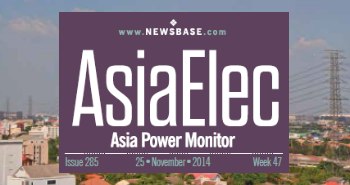AsiaElec: Are India's 100-GW solar ambitions within reach?

India’s Minister of New and Renewable Energy (MNRE), Raj Kumar Singh, announced to the nation’s parliament last week that India currently has 107.46 GW of fully installed solar, or in-part completed, projects on its books.
The announcement was seen as confirmation of the national goal of reaching 100 GW of fully installed solar energy facilities online and operational being achievable within the next twelve months.
Breaking down the numbers, in his written address to India’s Upper House of Parliament, the minister also said that as of October 31 this year, 42.26 GW of connected capacity was already in place.
Furthermore, a total of 36.65 GW of solar capacity is at various stages of completion, with a further 24.45 GW having been tendered.
Whilst not a ‘new’ goal for India, the addition of just over 7.5 GW in the current fiscal year to date in addition to 9 GW in the previous year is slowly pushing the total towards the desired figure of 100 GW.
Data released by India’s Central Electrical Authority (CEA), though, is less positive.
According to the CEA, when the nationwide solar total of installed capacity was just 43.94 GW at the start of August, efforts to reach the 100 GW goal would require installations to be quadrupled for the rest of the year.
This is posing a particular problem for roof-mounted solar installations.
Overall, India’s target will be met by a split of 60 GW of large-scale ground-mounted panels, and 40 GW of roof-mounted solar.
In cities across India, though, smaller-scale projects are being limited in how much capacity they can add to local grids as a result of restrictive local state fire laws and a National Building Code that limits panel installation to buildings over a certain height.
The effect of these limits meant that of the 40 GW of roof-mounted solar supposed to be in place by 2022, just 7 GW was up and running at the start of 2021.
The news of India’s push to 100 GW of solar was not welcomed with open arms throughout the country, however, as many in India’s business community still see the installation of solar power and other renewable energy projects as largely benefiting northern states controlled by the ruling Bharatiya Janata Party (BJP), led by Prime Minister Narendra Modi, including Gujarat and Uttar Pradesh.
Many of the large-scale installations thus far have been sited in the states of Karnataka, with over 15.5 GW of installed solar, and Gujarat with 14 GW. Both are solidly BJP, with only Tamil Nadu in the south-east of India, with 15.5 GW, a non-BJP stronghold, demonstrating the ability to attract large-scale solar plants.
Much of the rest of the heavily populated regions of eastern and southern India, besides Tamil Nadu, is still severely lacking in renewables infrastructure, solar in particular.
This has led to one Delhi-based non-profit organisation with its finger on India’s energy pulse, the Centre for Science and Environment, speaking through its director of climate change and renewable energy earlier this year, saying: “The capacity predicted at (our) end is 150 GW (of total installed renewable energy) by 2025, and 400 GW by 2030.”
By comparison, the MNRE headed by Raj Kumar Singh claims to be aiming at a 2030 total of 450 GW.
Competing for attention with India’s solar push, hydro-related projects across India are on course to meet a goal of 175 GW of installed capacity in a similar timeframe, with 150 GW of large- and smaller-scale projects already installed.
This figure, coupled with another 95.7 GW of hydro capacity still being implemented or at the bidding stage, could push the total to almost 250 GW of total hydro capacity in the near future.



Follow us online